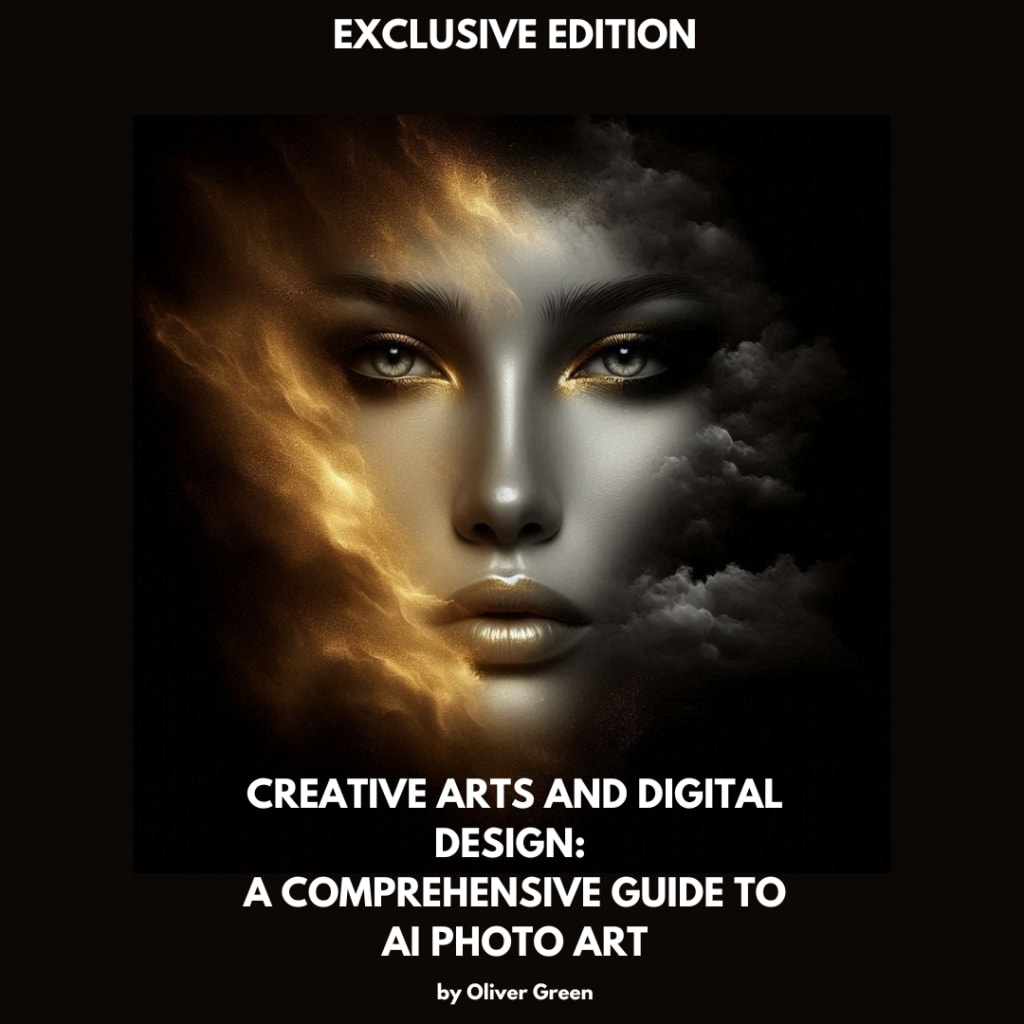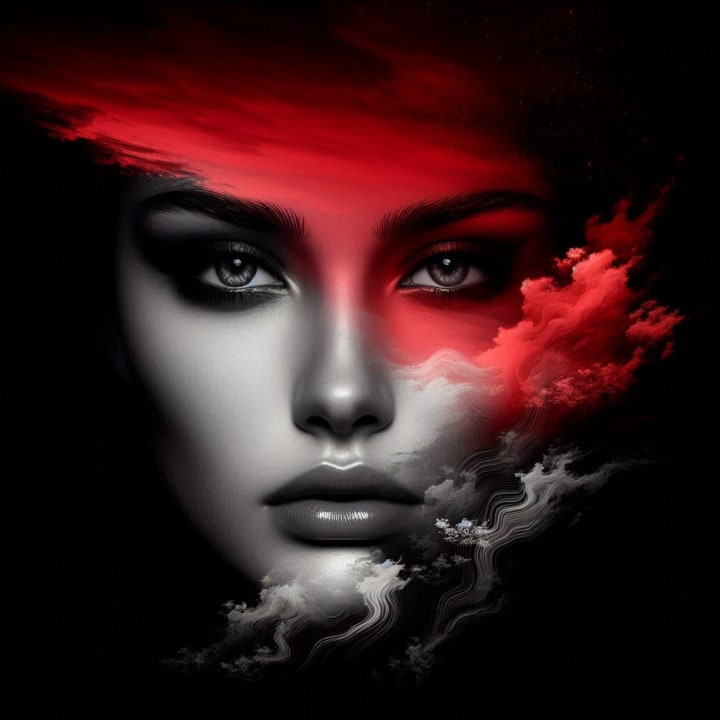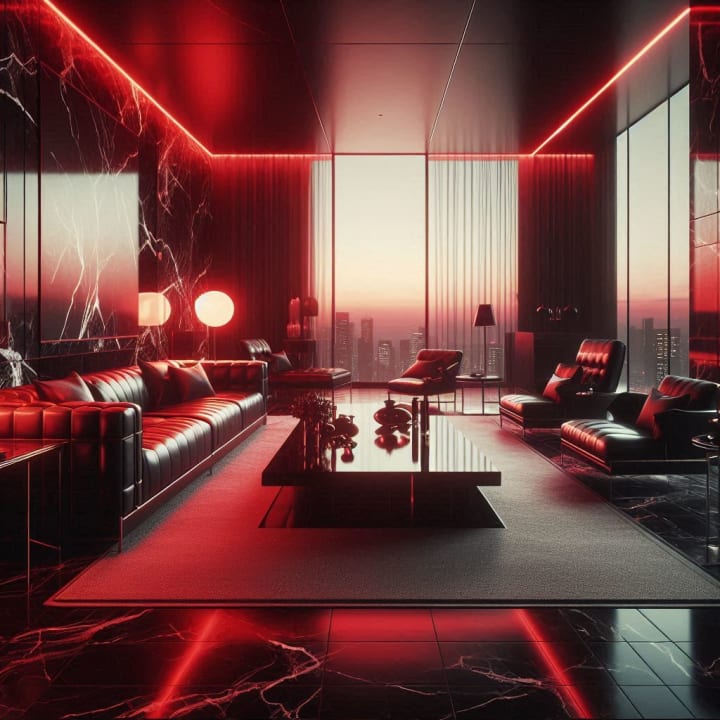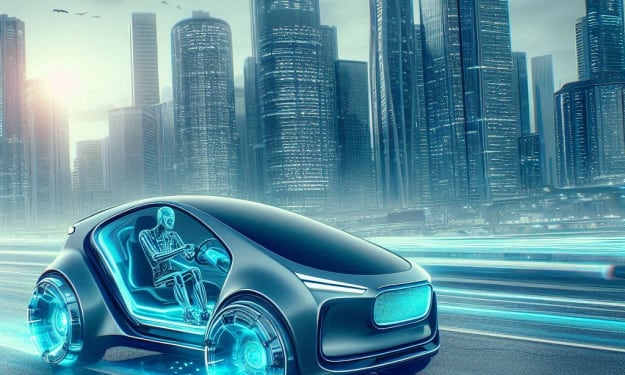Unlock the Future of Art: Your Ultimate Guide to AI Photo Art & Digital Design Ebook
AI in creative arts: A comprehensive guide

Introduction
Hey everyone! Today, I'm beyond excited to dive into the fascinating world of AI photo art with you all. If you're someone who's passionate about digital design, or even if you're just curious about how AI is revolutionizing the creative arts, this blog post is for you. We're going to explore the amazing insights from my book, "Creative Arts and Digital Design: A Comprehensive Guide to AI Photo Art." Whether you're a seasoned artist, a budding designer, or just someone who loves beautiful visuals, you'll find something to spark your creativity. So, let's get started!
What is AI Photo Art?
AI photo art is an exciting and rapidly growing field within digital design. It leverages the power of artificial intelligence to create, enhance, and transform images in ways that were previously unimaginable. By using advanced algorithms and machine learning techniques, AI tools can generate intricate and stunning artworks. This technology is not just a tool but a creative partner that expands the boundaries of what's possible in art and design.
Why AI Photo Art?
In today's fast-paced world, artists and designers are constantly looking for ways to keep up with the demands of their projects while still pushing the creative envelope. AI photo art provides a perfect solution. It offers efficiency, creativity, accessibility, and versatility all rolled into one. Whether you're a professional designer looking to enhance your workflow, a beginner eager to dive into the world of digital art, or a hobbyist wanting to experiment with new tools, AI photo art has something for you.
Key Concepts in AI Photo Art
Neural Networks
Neural networks are fundamental to AI, modeled after the human brain's structure. They consist of interconnected nodes (neurons) that process information in layers. In AI photo art, neural networks analyze and generate images by learning from a large dataset of existing visuals.
Generative Adversarial Networks (GANs)
GANs consist of two neural networks: a generator and a discriminator. The generator creates images, while the discriminator evaluates their authenticity compared to real images. Through this adversarial process, GANs improve the quality of generated images over time.
Style Transfer
Style transfer is a technique where an AI model applies the visual style of one image (e.g., a painting) to another image (e.g., a photograph). This allows artists to create unique and visually striking images by blending different artistic styles.
Tools and Software for AI Photo Art
Now, let's talk about some of the most popular AI art tools you can use to create your masterpieces. We'll look at DALL-E, MidJourney, and Stable Diffusion.
DALL-E
Developed by OpenAI, DALL-E is a neural network-based image generation tool that creates images from textual descriptions. It can generate highly detailed and creative visuals based on a wide range of prompts.
Features:
- Generates images from text prompts.
- Capable of creating highly detailed and imaginative visuals.
- Uses a transformer model to understand and generate complex scenes.
Strengths:
- High-quality image generation.
- Excellent for creative and imaginative prompts.
Weaknesses:
- Limited control over specific details in the generated images.
- Requires a good understanding of prompt crafting.
MidJourney
MidJourney is an AI-powered art generator that focuses on creating abstract and surreal art. It's particularly popular among digital artists for its ability to produce unique and visually stunning images.
Features:
- Specializes in abstract and surreal art.
- Generates images from text prompts.
- Offers a range of customization options for refining the generated art.
Strengths:
- Produces highly creative and unique visuals.
- Great for exploring abstract art styles.
Weaknesses:
- Less suited for realistic image generation.
- May require multiple iterations to achieve desired results.
Stable Diffusion
Stable Diffusion is an open-source AI tool that excels in generating high-quality, detailed images. It's known for its versatility and ability to produce a wide range of artistic styles.
Features:
- Open-source and customizable.
- Generates high-quality, detailed images from text prompts.
- Supports various artistic styles.
Strengths:
- Highly versatile and customizable.
- Produces detailed and high-quality images.
Weaknesses:
- May require technical expertise to fully utilize.
- Can be resource-intensive.

Creating AI Art Prompts
Creating effective prompts is crucial for generating high-quality AI art. A prompt is a textual description that guides the AI tool in generating an image. Here are some basics and advanced techniques to get you started.
Basics of Prompt Creation
- Understand Your Tool: Each AI art tool may interpret prompts differently. Familiarize yourself with the specific requirements and capabilities of the tool you are using.
- Be Descriptive: The more detailed and specific your prompt, the better the AI can understand your vision. Include key elements such as colors, objects, environments, and styles.
- Use Clear Language: Use clear and concise language to avoid confusion. Avoid ambiguous terms and ensure your description is straightforward.
Advanced Prompt Techniques
- Combining Concepts: Combine multiple concepts to create more complex and interesting images. This can involve blending different styles, elements, or themes.
- Experimenting with Styles: Experiment with different artistic styles to find what works best for your project. You can specify styles such as abstract, surreal, realistic, or impressionistic.
- Iterative Refinement: Generate an image, review the results, and refine your prompt based on what you see. This iterative process helps you achieve the desired outcome.
Integrating AI Art into Your Workflow
Integrating AI art into your workflow can significantly enhance your productivity and creativity. Here are some tips to create efficient workflows.
Efficient Workflows
- Define Your Objectives: Clearly define what you aim to achieve with AI art. Are you looking to create concept art, enhance existing designs, or generate new visual content?
- Plan Your Process: Outline the steps involved in your AI art creation process. This might include research, inspiration gathering, creating and refining prompts, generating initial images, reviewing and selecting the best images, and post-processing and final touches.
- Organize Your Workspace: Keep your digital workspace organized. Create folders for different projects, categorize images, and maintain a library of prompts and references. Use project management tools to track your progress and deadlines.

Time Management for AI Designers
Managing time effectively is crucial, especially when juggling multiple projects. Here are some strategies to help you stay on track.
- Set Priorities: Identify your high-priority tasks and focus on them first. Use a prioritization method such as the Eisenhower Matrix to categorize tasks based on urgency and importance.
- Use Time Blocks: Allocate specific time blocks for different tasks. For instance, dedicate mornings to creating and refining prompts and afternoons to generating and reviewing images. Stick to your schedule to maintain productivity.
- Limit Distractions: Minimize distractions by creating a dedicated workspace. Use productivity tools to block distracting websites and set clear boundaries with others to ensure uninterrupted work periods.
- Take Breaks: Incorporate regular breaks into your schedule to prevent burnout. Use techniques like the Pomodoro Technique, which involves working for 25 minutes and taking a 5-minute break.
Automation and Batch Processing
Automation can save you a significant amount of time by handling repetitive tasks. Here's how you can leverage automation and batch processing in your AI art workflow.
- Automated Image Generation: Some AI art tools offer batch processing features that allow you to generate multiple images at once. Create a list of prompts and use the tool's batch processing capability to generate a large number of images in one go.
- Scripted Workflows: For more advanced users, scripting can automate parts of the workflow. Tools like Python can be used to write scripts that automate image generation, sorting, and even basic post-processing tasks.
- Integrating AI with Other Tools: Combine AI art tools with other software to create a seamless workflow. For instance, use AI tools for initial image generation and then import the images into Photoshop or GIMP for further refinement.
Enhancing AI Art with Traditional Techniques
Blending AI-generated art with traditional design methods can produce unique and compelling results. Here are some techniques to effectively combine both approaches.
Overlay and Blending
One of the simplest ways to combine AI and traditional art is by overlaying AI-generated images with hand-drawn or digitally painted elements. This can be done using layers in software like Photoshop.
Example:
- Generate a base image using an AI tool.
- Import the image into Photoshop and create a new layer.
- Use a brush to paint over specific areas, enhancing or altering details.
- Experiment with layer blending modes to achieve the desired effect.
Texture and Detailing
Use AI-generated images as a base and add textures or fine details manually. This technique allows you to retain the AI's creative output while adding a personal touch.
Example:
- Generate an image of a landscape using an AI tool.
- Import the image into a digital painting program.
- Add texture to the trees, rocks, and water using custom brushes.
- Enhance details like leaves, shadows, and reflections manually.
Color Correction and Adjustments
AI-generated images might need color correction or adjustments to match your vision. Use photo editing software to tweak colors, contrast, and brightness.
Example:
- Generate an image using an AI tool.
- Open the image in a photo editing program.
- Adjust the color balance to correct any color casts.
- Use tools like Curves and Levels to enhance contrast and brightness.

Creating Unique Styles
Developing a unique style is essential for standing out in the world of AI art. Here are some tips to help you create and maintain your own style.
Consistent Themes and Motifs
Identify themes and motifs that resonate with you and incorporate them consistently into your work.
Example:
- Choose a theme like "futuristic cityscapes" or "fantasy landscapes."
- Use elements like specific color palettes, shapes, and compositions that align with your theme.
Signature Techniques
Develop signature techniques that become a hallmark of your style.
Example:
- Use a unique color grading process that gives your images a distinct look.
- Incorporate hand-drawn elements or specific textures that are unique to your work.
Continuous Experimentation
Experiment continuously with new tools, techniques, and styles to evolve your work.
Example:
- Regularly try out new AI tools and see how they affect your art.
- Experiment with different traditional art techniques and incorporate them into your AI art.
Case Studies and Success Stories
Profiles of Successful AI Artists
Artist Profile: Anna Smith
- Anna Smith is a digital artist who has successfully integrated AI art into her work. Known for her vibrant and imaginative creations, Anna uses AI tools to generate base images which she then enhances using traditional digital painting techniques.
- Background: With a background in graphic design, Anna was initially skeptical about AI art. However, she quickly realized its potential to expand her creative boundaries.
- Approach: Anna begins by generating multiple AI images based on detailed prompts. She selects the best images and imports them into Photoshop for refinement.
- Notable Works: Anna's AI-enhanced artworks have been featured in several digital art magazines and exhibited in galleries.
- Key Takeaway: Embrace the creative possibilities offered by AI while adding your unique touch through traditional techniques.
The Future of AI Photo Art
Trends and Predictions
Increased Integration of AI in Creative Industries
AI is becoming increasingly integrated into various creative industries, including advertising, film, fashion, and game design. As AI tools become more sophisticated, their adoption is expected to grow, making AI-generated art a standard part of the creative process.
Prediction: By 2030, it is predicted that AI will be a common tool in most creative studios, helping to streamline workflows and enhance creativity.
Evolution of AI Art Tools
AI art tools are constantly evolving, with new features and improvements being introduced regularly. These tools are becoming more user-friendly, allowing artists of all skill levels to create high-quality AI art.
Prediction: Future AI tools will offer even more advanced capabilities, such as real-time image generation, improved customization options, and seamless integration with other design software.
Ethical Considerations and AI Art
As AI-generated art becomes more prevalent, ethical considerations regarding originality, copyright, and the role of the artist will come to the forefront. Discussions about the ethical use of AI in art will shape the future development and adoption of these technologies.
Prediction: Industry standards and regulations will be established to address ethical concerns, ensuring fair use and recognition of AI-generated art.
Conclusion
We've journeyed through the fascinating world of AI photo art, exploring its definition, key concepts, tools, techniques, and future trends. AI is not just a tool but a revolutionary force that is transforming the creative arts. Whether you're a professional designer, a beginner, or a hobbyist, the potential to create stunning and unique artworks with AI is at your fingertips. So, go ahead, experiment with AI tools, blend them with traditional techniques, and let your creativity soar to new heights!
About the Creator
Oliver Green
❤️ 30 Years old
💰 Sink ( Single income, no kids)
👔 I work as a Blogger
📊 I love ChatGPT and AI
💻 Hobbies: Gamer, and the Reading.
Enjoyed the story? Support the Creator.
Subscribe for free to receive all their stories in your feed. You could also pledge your support or give them a one-off tip, letting them know you appreciate their work.






Comments
There are no comments for this story
Be the first to respond and start the conversation.